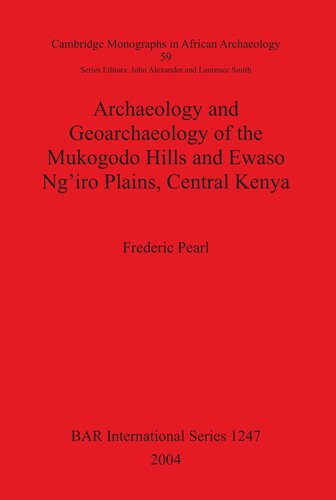

Most ebook files are in PDF format, so you can easily read them using various software such as Foxit Reader or directly on the Google Chrome browser.
Some ebook files are released by publishers in other formats such as .awz, .mobi, .epub, .fb2, etc. You may need to install specific software to read these formats on mobile/PC, such as Calibre.
Please read the tutorial at this link: https://ebookbell.com/faq
We offer FREE conversion to the popular formats you request; however, this may take some time. Therefore, right after payment, please email us, and we will try to provide the service as quickly as possible.
For some exceptional file formats or broken links (if any), please refrain from opening any disputes. Instead, email us first, and we will try to assist within a maximum of 6 hours.
EbookBell Team

4.1
40 reviewsSince 1996, the author has been involved with a cultural, archaeological, and geological survey of the Mukogodo Hills and Ewaso Ng'iro Plains in Central Kenya. Results of this research are presented herein, with a primary goal of providing an environmental chronology and describing patterns of human land use through the Late Pleistocene. This was accomplished through geoarchaeological and archaeological survey. The geoarchaeological study demonstrates how local environmental conditions, particularly fluvial geomorphology, have responded to East African climatic fluctuations. This, in turn, provides a comparative basis to interpret cultural change documented by the archaeological survey. While building on research that has already been conducted in the region, these investigations provide the context within which to make archaeological interpretations meaningful. This research addresses four main questions. First, did landscape changes affect the distribution of archaeological sites in the Mukogodo Hills-Ewaso Ng'iro Plains region? Second, are there significant differences in land-use patterns between the Middle and Later Stone Age inhabitants of the region? Third, did the arrival of pastoralism contribute to erosion and degradation of the landscape? Fourth, has ecological change correlated with changes in economic patterns observed in the archaeological record?